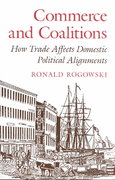Use the figure below to answer the following questions. Consumption expenditure (billions of 2007 dollars per year) 800 45* line Consumption function 600 500 400 A 260 D 200 100 0 200 260 500 800 Disposable income (billions of 2007 dollars per year) Figure 11.1.1 This figure describes the relationship between consumption expenditure and disposable income for an economy. Refer to Figure 11.1.1. The marginal propensity to consume for this economy is Select one:A. 0.2. O B. 1. O C. 0.8. O D. 0.6. O E. 0.5. O45. What does it mean for a country that is on a fixed exchange-rate system to have a balance of payments surplus? A) The quantity supplied of its currency on the international money market will exceed the quantity demanded B) The exchange rate is overvalued. C) There is an inflow of foreign currencies into the country D) The balance of payments surplus is matched by a balance of trade deficit. E) There is an outflow of foreign currencies from the country. 46. The country of Lancore, which was on a fixed exchange-rate system and had an undervalued currency, has just adopted a flexible exchange-rate system. Which of the following statements is correct? A) Lancores's currency will depreciate and its exports will increase as a result B) Lancores's currency will appreciate and its exports will increase as a result () Lancores's currency will depreciate and its exports will decrease as a reach DJ Lancores's currency will appreciate and its exports will decrease as a result 47. Assuming flexible exchange rates, which of the following would result in an increase in a country's exchange rate? A) The purchase by the central bank of its own currency. B) The purchase by the central bank of foreign currencies. () The sale by the central bank of its own currencies. D) The central bank decreasing the country's interest rates. E) The government imposing an export tax. 48. What is the long-term result of a central bank fixing an exchange rate below the equilibrium market rate? A) The money supply will have to decrease resulting in inflation. B) The money supply will have to decrease resulting in deflation C) The money supply will have to increase resulting in inflation. D) The money supply will have to increase resulting in deflation. E) The money supply will decrease but the price level will be unaffected. 49, Why are governments often reluctant to announce that they may devalue a currency? A) Because it will result in a higher exchange rate. B) Because devaluation is only possible with flexible exchange rates. () Because devaluation is only possible under the gold standard. D) Because it implies a lack of confidence which will discourage poople from bolding the currency. E) All of the above 50. Which of the following statements is true? A) Inflows of foreign investment are necessary to prevent future balance of payments deficits B) A current account surplus is always the result of a capital account deficit. () A current account surplus is always the result of a trade account surplus. D) A capital account surplus may cause outflows of foreign investment income in the future. E) All of the above









